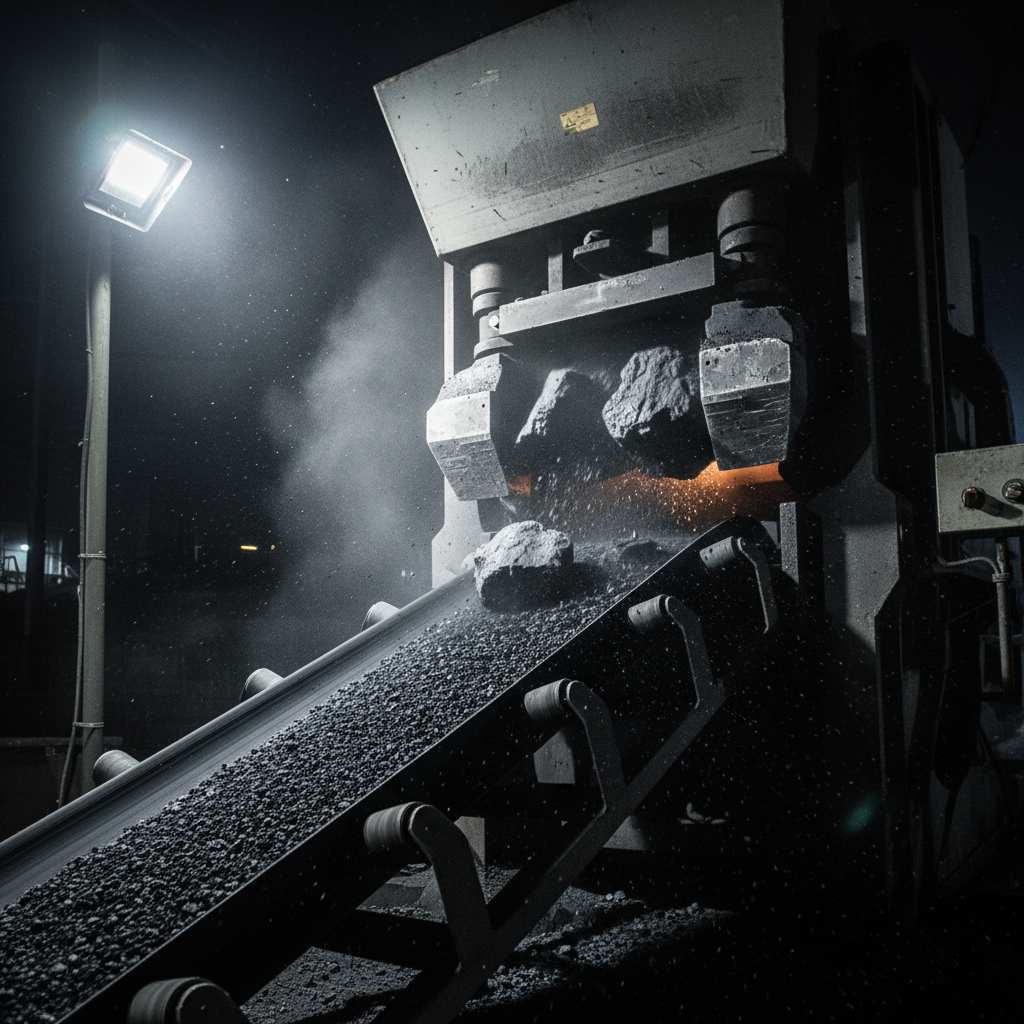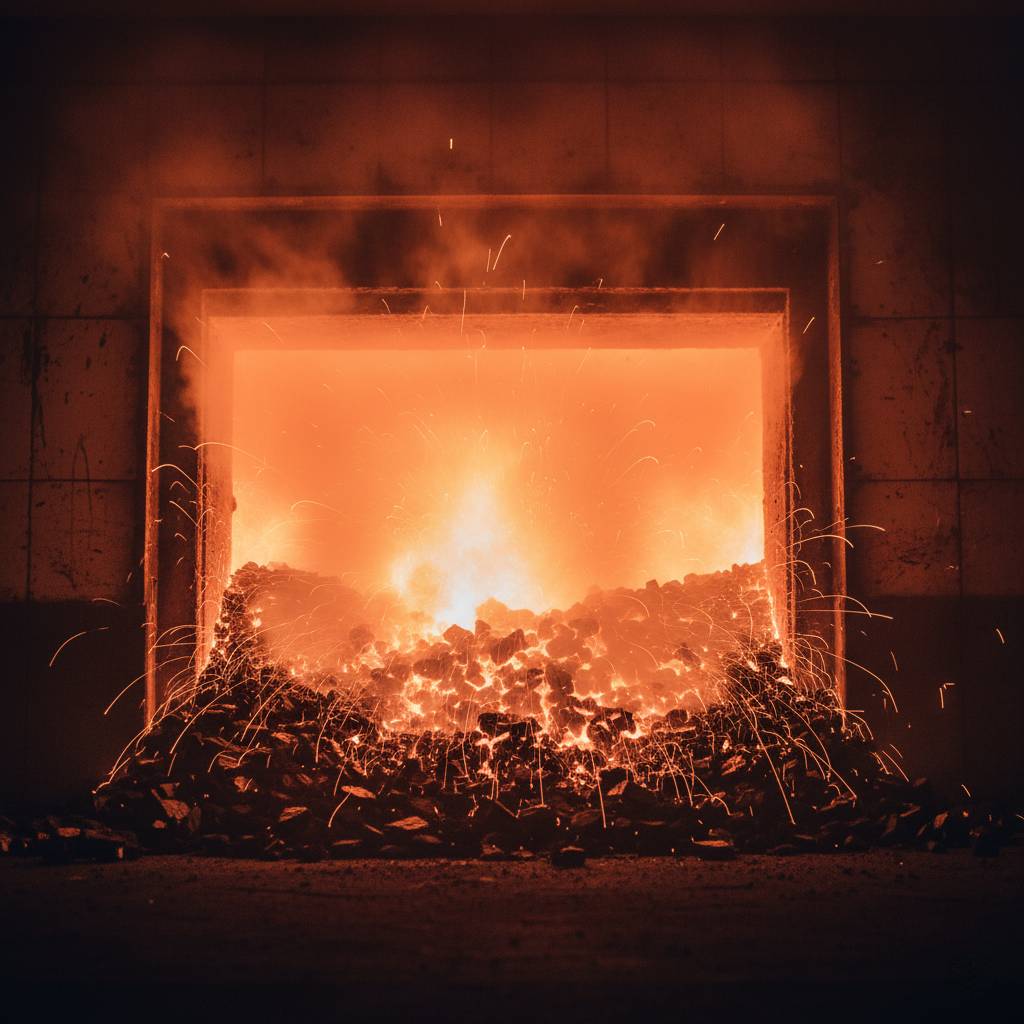The Unseen Engine of Purity
In our modern world, purity is not a luxury but a fundamental necessity. From the drinking water that flows from our taps to the air we breathe, an invisible layer of technology works tirelessly to remove harmful contaminants and ensure our safety. At the heart of many of these critical purification systems lies a remarkable material: activated carbon. This porous black granule is the unsung hero of countless industrial and municipal processes. Yet, its creation is a feat of thermal and chemical engineering that is often overlooked.
The effectiveness of activated carbon is not a matter of chance—it is forged in fire and meticulously engineered. The journey from a raw mineral to a high-performance purification medium is a precise, multi-stage process where every step is critical to the final product’s quality and reliability. This article demystifies that journey. We will take a deep dive into the manufacturing of coal-based activated carbon, revealing how a controlled and sophisticated process transforms humble coal into one of the most powerful adsorbents available, and why understanding this process is essential for anyone tasked with solving mission-critical purification challenges.
The Foundation of Performance: Why a Process Begins with Coal
The final performance characteristics of any activated carbon product are determined mainly before manufacturing begins. The selection of the raw source material is the most critical decision, dictating the finished carbon’s eventual pore structure, hardness, and purity. While activated carbon can be produced from various sources, including coconut shells and wood, specific grades of coal are chosen for their unique ability to make a highly effective and durable final product.
Bituminous vs. Anthracite: Selecting the Optimal Carbon Source
Not all coal is created equal. The two primary types of activated carbon production are bituminous and anthracite coal. While both are effective, bituminous coal is frequently the preferred starting material for high-grade activated carbon. The reason lies in its chemical composition. Bituminous coal contains a higher level of volatile matter, which, during the activation process, helps to create a more varied and highly developed internal pore structure. This results in a broad range of pore sizes—from tiny micropores to larger meso- and macropores—making the carbon exceptionally effective at adsorbing a broad spectrum of organic contaminants of different molecular sizes and weights. Anthracite, a harder coal with lower volatiles, produces a distinct pore structure. It can be advantageous for specific niche applications. However, it is often less versatile than its bituminous counterpart for general water and air purification.
From the Mine to Our Mill: Raw Material Preparation
The commitment to quality begins the moment the raw coal is extracted. Once the optimal grade of bituminous coal is selected and transported from the mine, it undergoes a series of essential preparatory steps. The first is crushing and sizing. The raw coal is milled into particles of a predetermined size, a crucial step that ensures uniform heat transfer and activation in the subsequent stages. After sizing, the coal is thoroughly washed to remove extraneous materials like sand, clay, and other inorganic impurities. This initial purification is vital, as it reduces the final ash content of the activated carbon. High ash content can interfere with the adsorption process and lower the overall efficiency of the product. This rigorous preparation guarantees that only the highest quality carbonaceous material enters the kilns, setting a high standard from the outset.

The Heart of Transformation: The Two-Step Activation Method
With the raw material prepared, the process moves to the core transformative stage: activation. This is where the inert coal is converted into a material with an astonishingly vast internal surface area—a single gram of activated carbon can have a surface area equivalent to a football field. This is achieved through a highly controlled, two-step thermal process: carbonization and steam activation.
Step 1: Carbonization in an Oxygen-Free Environment
The first step, known as carbonization or pyrolysis, is designed to eliminate the non-carbon elements from the coal. The prepared coal is fed into a large, rotary kiln and heated to extreme temperatures, typically between 600-900°C (1100-1650°F). Critically, this process occurs in an inert, oxygen-free atmosphere, usually maintained by flue gas or nitrogen inflow. The absence of oxygen is crucial because it prevents the coal from combusting. Instead of burning, the intense heat breaks down the complex hydrocarbons within the coal, driving off the volatile matter (like methane, hydrogen, and tars) and leaving behind a carbon-rich “char.” This char possesses a preliminary, rudimentary pore structure but lacks the highly developed network required for effective adsorption. Carbonization is the essential precursor to activation, creating the stable carbon skeleton that will be refined in the next step.
Step 2: Steam Activation to Engineer the Adsorption Network
The char produced during carbonization is then subjected to the most critical stage of the entire process: activation. The material is advanced into a second furnace or a different zone of the kiln where it is heated to even higher temperatures, ranging from 800°C to 1100°C (1470-2010°F). In this furnace, a controlled flow of high-temperature steam is injected.
This is where the magic of activation happens. The intensely hot steam acts as a mild oxidizing agent. It initiates a gasification reaction with the carbon atoms in the char, selectively etching away parts of the internal carbon structure. This reaction (C + H₂O → CO + H₂) essentially “burns” microscopic channels and pathways into the carbon skeleton, developing and dramatically expanding the internal pore network. It is an exact process. Manufacturers can engineer the final pore structure by carefully controlling the temperature, steam flow rate, and residence time within the furnace, tailoring it for specific applications. This steam activation process carves out billions of new pores, primarily in the micropore range, essential for adsorbing the most common organic contaminants in water and air. The result is a material with an immense network of pores and an incredibly high internal surface area, now officially transformed into “activated” carbon.

From Raw Carbon to Refined Product: Finishing and Quality Assurance
The activation process yields a highly porous but still unfinished product. The activated carbon must undergo a final processing series and rigorous quality assurance testing to create a consistent, reliable, and user-friendly material ready for mission-critical applications. These finishing steps separate a high-grade, specified product from a simple commodity.
Precision Sizing, Washing, and De-Dusting
After exiting the activation kiln and cooling, the carbon is processed to meet final customer specifications. This typically involves further crushing and screening to sort the material into specific size ranges, such as Granular Activated Carbon (GAC) or Powdered Activated Carbon (PAC). A consistent particle size is essential for GAC used in large filter vessels to ensure proper hydraulic performance and prevent pressure drop issues. Following sizing, the carbon is subjected to another washing stage to remove any remaining water-soluble ash and other fine particles. Finally, it undergoes a de-dusting step. This is especially important for ensuring superior hardness and low attrition rates. A well-de-dusted product minimizes the creation of carbon fines during shipping, handling, and backwashing, guaranteeing a cleaner operation and less product loss for the end-user.
The Metrics That Guarantee Quality: Our Lab Testing Protocols
The final and most crucial step before packaging is comprehensive quality assurance testing. A sample from every production batch is taken to a laboratory to be tested against a battery of industry-standard metrics. These tests are not mere formalities; they guarantee that the product will perform as expected. Key metrics include:
- Iodine Number: This is one of the most fundamental parameters, measuring the porosity of the activated carbon by its ability to adsorb iodine from a solution. A higher Iodine Number (typically >800 mg/g) indicates a larger surface area and a high capacity for adsorbing small molecular contaminants.
- Hardness/Abrasion Number: This metric measures the carbon’s physical durability and resistance to breaking down under the stress of backwashing and handling. A high Hardness Number directly indicates a long service life and lower operational costs due to reduced media replacement.
- Ash Content: This measures the non-carbon, inorganic material remaining in the product. Lower ash content is desirable as high ash levels can reduce adsorption capacity and potentially leach impurities.
- Molasses Number: This test measures the carbon’s ability to adsorb large molecules, indicating the extent of its mesopore and macropore structure.
This meticulous quality control directly translates to performance. For instance, a high hardness number ensures longevity. This allows a typical municipal water plant to see a filter lifespan of 15-20% longer due to our GAC’s superior durability. This commitment to verifiable, data-backed quality provides peace of mind for engineers and plant managers.
A Meticulous Process for a Mission-Critical Product
The journey from a piece of bituminous coal to a high-performance activated carbon granule is a testament to controlled chemical and thermal engineering. It is a process where raw potential is systematically unlocked and refined through carbonization, precision steam activation, and rigorous quality control. Each step—from selecting the right raw material to verifying the final Iodine Number—is a deliberate action designed to build a product defined by its purity, consistency, and unparalleled adsorptive power.
Understanding this meticulous process reveals a fundamental truth: the performance of your purification system depends directly on the quality of the media within it. A consistent, high-activity carbon from a well-controlled process delivers reliable, predictable performance, helping you meet stringent regulatory standards and optimize operational costs.

